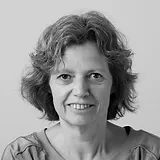
Anke van den Berg
prof. dr.
I work as a clinical molecular biologist in the department of Pathology. In this function I supervise and implement advanced molecular diagnostic techniques. Within my research line, I focus on the molecular pathogenesis of B-cell Hodgkin and non-Hodgkin lymphoma. The specific fields of interest are genomic aberrations, genetic susceptibility, and the role of small and long noncoding RNAs. I have several international collaborations and am PI and co-PI in various projects.
Normal FHIT transcripts in renal cell cancer- and lung cancer-derived cell lines, including a cell line with a homozygous deletion in the FRA3B region
The recently identified FHIT gene encompasses the FRA3B region and the breakpoint of a constitutive t(3;8) occurring in a family with hereditary renal cell cancer. Occurrence of aberrant transcripts in different types of tumours has led to the suggestion that FHIT might play a critical role in the development of various types of cancer. We have analyzed the gene and its transcripts in lung cancers and renal cell cancer-derived cell lines. A lung adenocarcinoma cell line, GLC-A2, appeared to have a homozygous deletion in intron 5 of FHIT....
Anke van den Berg, TG Draaijers, K Kok, T Timmer, AY VanderVeen, PMJF Veldhuis, L deLeij, CD Gerhartz, SL Naylor, DI Smith, CHCM Buys
Allelic imbalance at the beta-catenin gene (CTNNB1 at 3p22-21.3) in various human tumor types
beta-catenin is a multifunctional protein: it plays a central role in the cell-cell adhesive junctions, and participates in transduction of the morphogenic Wingless/Wnt-signal. Upon detailed analysis of the human beta-catenin gene, an intragenic polymorphic microsatellite marker could be identified. This marker shows 62% heterozygosity and was used in a study of eleven different tumor types. A high level of beta-catenin allelic imbalance was observed for small cell lung carcinoma, squamous cell lung carcinoma and cervix carcinoma. Other microsatellite markers on 3p24-21 could demonstrate frequent but not invariable codeletion...
F Nollet, Anke van den Berg, AM Kersemaekers, AM CletonJansen, G Berx, AY VanderVeen, C Eichperger, [No Value] Wieland, J DeGreve, GJ Liefers, WH Xiao, CHCM Buys, C Cornelisse, F VanRoy
Genetics as a diagnostic tool in sarcomatoid renal-cell cancer
Renal-cell cancer comprises a heterogeneous group of tumors, which currently can be sub-divided into morphologically distinct entities, each characterized by a specific combination of genetic changes. Sarcomatoid transformation might occur in any of the sub-types, resulting in tumors consisting of both carcinomatous and sarcomatous components. The specific diagnosis of these neoplasms, as to tumor sub-type, is usually made on the histologic properties of the carcinomatous tissue present. However, this might not reflect the true nature of the sarcomatous component. Since the genetic changes associated with the development of...
T Dijkhuizen, E VandenBerg, A. van den Berg, A VandeVeen, H Faber, CHCM Buys, S Storkel, B DeJong, A. Dam
Involvement of multiple loci on chromosome 3 in renal cell cancer development
In renal cell carcinoma (RCC), mostly occurring as sporadic cases, the short arm of chromosome 3 is a frequent target of deletion events. Taking into account cytological classifications of RCC, the deletions appear to be characteristic of clear cell or nonpapillary RCC only. This subtype constitutes most sporadic RCC and RCC as part of the Von Hippel-Lindau disease caused by germline mutations of VHL at 3p25. In a proportion of sporadic rumours, somatic mutations of VHL occur, again only in clear cell or nonpapillary RCC. However, in a...
Anke van den Berg, CHCM Buys
Cosmid contig and cDNA map of the human chromosome 13q14 region frequently lost in B-cell chronic lymphocytic leukemia
We constructed a fine physical map of human chromosome 13q14 region between D13S1168 and D13S25 loci consisting of cosmid and cDNA clones. This interval had been shown to be in the center of the genome region frequently lost in a human blood malignancy known as B-cell chronic lymphocytic leukemia (BCLL), Mapping of the genome region is a step in searching for a putative tumor suppressor gene for BCLL. A chr13-specific cosmid library (LA13NC01) was screened with four YAC and seven WI-STS markers belonging to the above 13q14 interval,...
BI Kapanadze, VM Brodyanskii, AB Semov, AV Baranova, GE Sulimova, SS Aitova, IG Udina, SN Ptitsyna, LE Salnikova, OS Chudinov, TE Borbiev, VV Kashuba, R Gizatullin, [No Value] Zabarovska, ER Zabarovsky, LI Fedorova, AV Zelenin, O Rasool, D Grander, S EinhornW vanEverdink, Anke van den Berg, C Buys, M Corcoran, RM Chapman, NK Yankovsky
